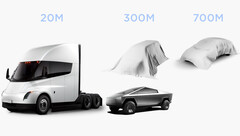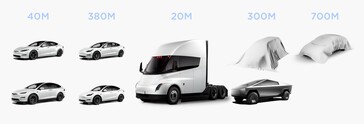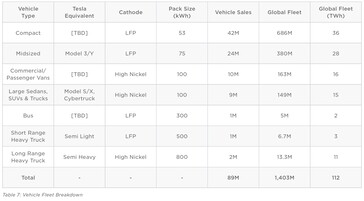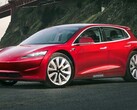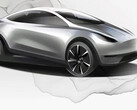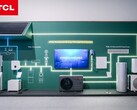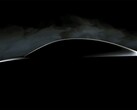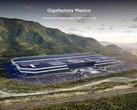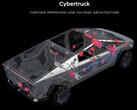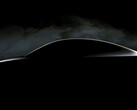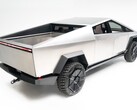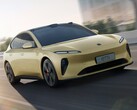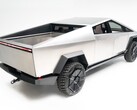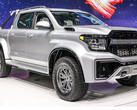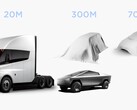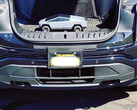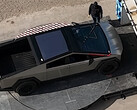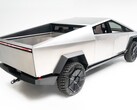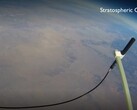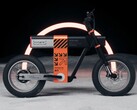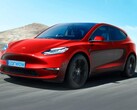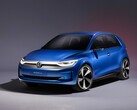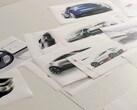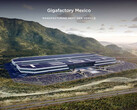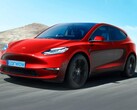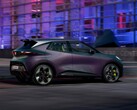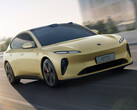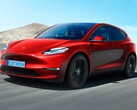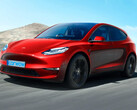Tesla just posted its long-awaited Master Plan 3 where it is of the opinion that we can move away from fossil fuels at just 2/3 of the costs associated with their extraction in the next 20 years. Master Plan 3 details how electrified transportation, including trucks, ships, and planes, as well as renewables and residential heat pumps will drastically change the way the world produces and consumes energy sustainably.
The move will cost US$10 trillion, according to Tesla, which it says is much less than the US$14 trillion that will be spent on extraction, refinement, and transportation of fossil fuels in that same 20-year period, based on last year's costs. Tesla acknowledges the deficiencies in its report, too, namely that it is based off of the IEA Energy Balances scalar, while "global energy demands are different from the U.S. in their composition and expected to increase over time."
In any case, the Master Plan 3 paper is a treasure trove of information about Tesla's future electric vehicle plans. While waxing poetic how a Model 3 is 3x more efficient than an average gas-powered car like Toyota Corolla, Tesla also listed how this energy efficiency will be scaled with its upcoming mass market electric vehicles like the Model 2 and... fleet vans or buses.
Tucked on page 22, in the section which calculates that 112 TWh of batteries will be needed to electrify the current global fleet of 1.4 billion vehicles, is a table with a "Tesla equivalent" EV column. There, amidst the existing portfolio of Tesla cars like the Model 3/Y, S/X, Cybertruck or the Semi, are three new vehicle types it plans to release and conquer every market niche it is currently not present in. These three new categories Tesla plans to wiggle itself in are of compact cars, passenger or commercial vans, and buses.
Chief among those is the "compact" category, of which 686 million are currently on the road. Here, Tesla plans to participate with "TBD" cars built on the next-gen mass market platform for cheaper EVs it unveiled not long ago.
They will most likely be of the Model 2 type, whose 4 million units annual production plan leaked the other day, and which is said to resemble a scaled down Model Y rather than a smaller Model 3. This category will be powered by LFP packs with 53 kWh of battery capacity on average.
This speaks volumes about the Model 2 range on a charge and jibes with previous analyst predictions that the car will have a 25% smaller battery than the current midsize Model 3/Y. Since the Model 2 is also expected to be shorter and 30% lighter than the cars in Tesla's midsize category, though, it may still offer 270 miles of range on a charge like the base Model 3, despite the smaller battery.
Now, the passenger or commercial fleet vans, or the electric bus that Tesla says it will have equivalents for, will have much larger batteries, as can be expected. The bus category will be powered by a 300 kWh LFP battery size on average, but the "Commercial/Passenger vans" section is listed with 100 kWh of performance high-nickel battery capacity.
Last but not least of the revelations in Tesla's Master Plan 3 paper is that it envisions the average battery size in the "Large Sedans, SUVs & Trucks" category to be 100 kWh. Coincidentally, this is where Tesla lists the Cybertruck as well, so 100 kWh may end up being its average battery capacity across versions and trims.
Tesla informs that the Cybertruck battery cells will be of the performance high-nickel type it would put in the high-end Model S/X, or those with "zero cobalt Nickel Manganese cathodes currently in production, under development at Tesla, Tesla’s suppliers and in research groups." These are the batteries that are currently placed in long-range and performance electric vehicles, and that's the chemistry Tesla confirms for use in the Cybertruck as well.
Get the Wallbox Pulsar Plus 48А Level 2 Electric Vehicle Smart Charger on Amazon


 Deutsch
Deutsch English
English Español
Español Français
Français Italiano
Italiano Nederlands
Nederlands Polski
Polski Português
Português Русский
Русский Türkçe
Türkçe Svenska
Svenska Chinese
Chinese Magyar
Magyar